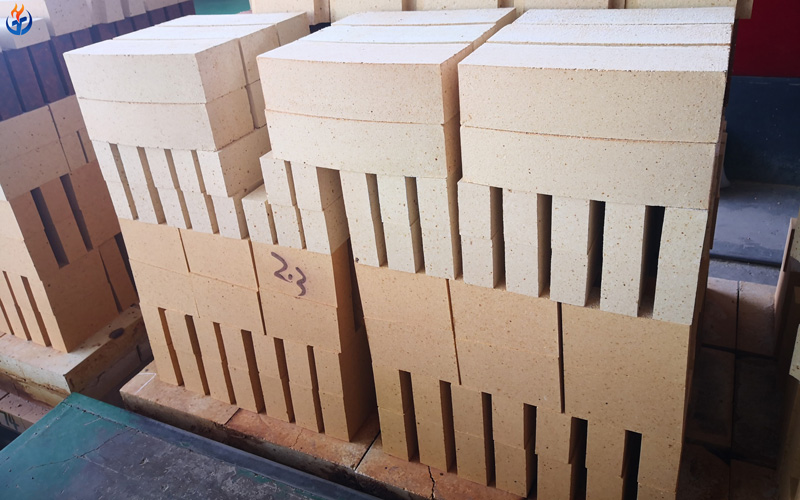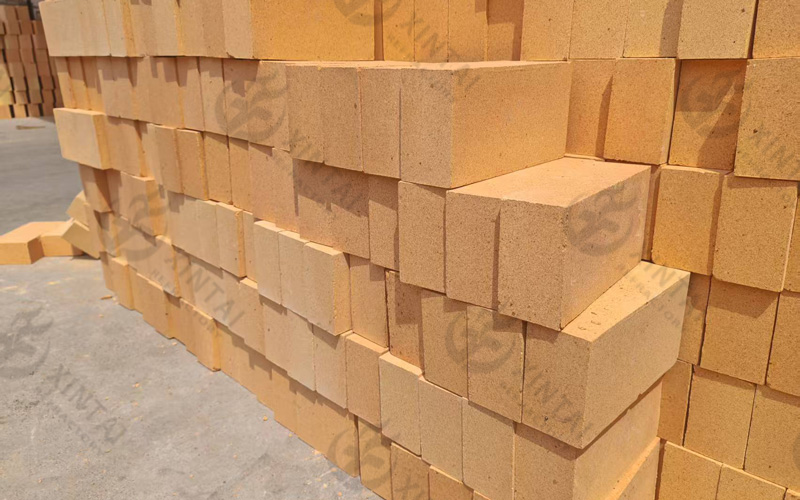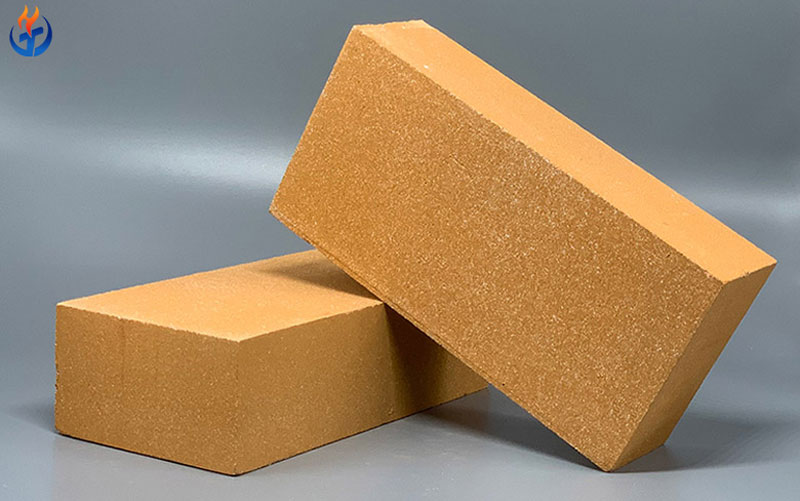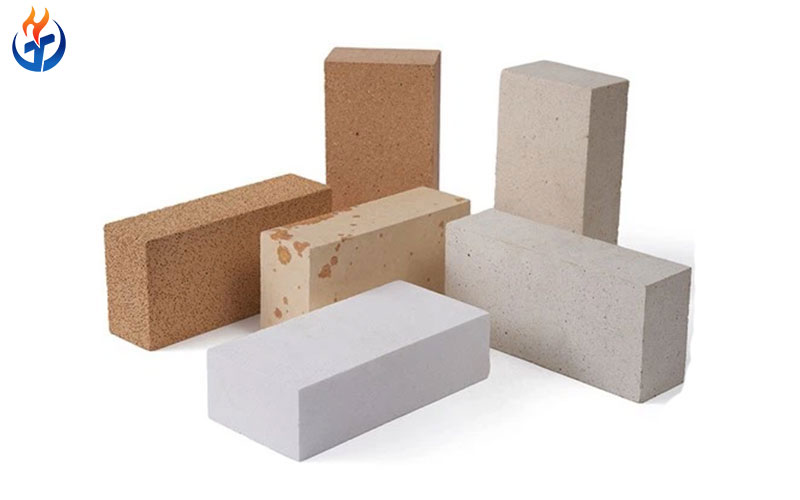High alumina bricks are one of the most commonly used refractory materials in high-temperature industrial furnaces. Known for their excellent heat resistance, high mechanical strength, and strong chemical stability, these bricks are an essential part of the refractory industry. In this article, Xintai Refractory will explore the high alumina bricks uses, their composition, properties, advantages, and the industries that rely on them for performance and durability.

What Are High Alumina Bricks?
High alumina bricks are a type of refractory brick made primarily from alumina (Al₂O₃) and other raw materials like bauxite, kaolin, or corundum. The alumina content in these bricks is typically above 48%, and higher grades may reach up to 90% or more, depending on the application.
The main purpose of high alumina bricks is to withstand high temperatures, resist corrosion and erosion, and maintain structural stability in furnaces, kilns, and other thermal equipment.
The main categories of high alumina bricks include:
48%–55% Al₂O₃ Bricks (Low-grade) – Suitable for moderate-temperature applications.
60%–70% Al₂O₃ Bricks (Medium-grade) – Commonly used in steel and cement industries.
75%–90% Al₂O₃ Bricks (High-grade) – Designed for extremely high temperatures and aggressive environments.
Key Properties of High Alumina Bricks
Before exploring high alumina bricks uses, it’s important to understand the key features that make them suitable for a variety of demanding conditions:
High Refractoriness
High alumina bricks can withstand temperatures above 1750°C, making them ideal for furnace linings, kilns, and other high-temperature zones.Excellent Thermal Stability
They can handle rapid temperature changes without cracking or spalling.Strong Chemical Resistance
These bricks resist corrosion by slags, alkalis, and acids, especially in metallurgical and cement processes.High Mechanical Strength
Their compressive strength ensures stability under heavy loads at elevated temperatures.Good Slag Resistance
Due to high alumina and low iron content, they resist slag penetration and erosion effectively.Low Creep Rate
Even under constant high-temperature stress, high alumina bricks maintain shape and structural integrity.
High Alumina Bricks Uses in Different Industries
Now, let’s dive into the main topic: the various uses of high alumina bricks across industries. These applications highlight their versatility and critical role in modern thermal engineering.
1. Iron and Steel Industry
One of the largest consumers of high alumina bricks is the iron and steel industry.
In steelmaking, high alumina bricks are widely used to line various thermal units, such as:
Blast Furnaces:
Used in the upper shaft and bosh area due to their resistance to high temperatures and slag erosion.Hot Blast Stoves:
High alumina bricks serve as checker bricks and lining materials in hot blast stoves for heat storage and transfer.Ladle Linings:
They are used in the working and safety linings of steel ladles to resist molten metal corrosion.Torpedo Cars & Tundishes:
High alumina refractories provide thermal insulation and chemical stability during molten metal transportation.
Why used:
Because they resist chemical attack from iron oxides and slags while maintaining high strength at 1500–1700°C.
2. Cement and Lime Industry
In rotary kilns and calcining zones of cement plants, high alumina bricks are essential for lining the burning zone, transition zone, and coolers.
Burning Zone:
Exposed to high temperatures (up to 1450°C) and corrosive clinker dust. High alumina bricks ensure long lining life and stable operation.Coolers and Preheaters:
Their excellent resistance to abrasion and chemical corrosion makes them perfect for use in clinker coolers and preheater towers.
Why used:
They provide durability and minimize maintenance costs due to their excellent wear and alkali resistance.
3. Non-Ferrous Metal Industry
In the copper, aluminum, and zinc smelting industries, furnaces operate under highly corrosive and high-temperature conditions.
High alumina bricks are used in:
Anode Furnaces
Electric Smelting Furnaces
Refining Furnaces
Their strong resistance to slags and acidic vapors extends service life and improves furnace efficiency.
4. Ceramic Industry
In ceramic kilns, tunnel kilns, and roller kilns, high alumina bricks are used to construct walls, roofs, and supports.
Kiln Furniture and Support Structures:
Because they resist deformation and maintain strength at high temperatures, they are ideal for supporting ceramic ware during firing.
Why used:
They provide stable firing conditions and help maintain temperature uniformity inside the kiln.
5. Glass Industry
High alumina bricks are used in the regenerator chambers, melting tanks, and feeder channels of glass furnaces.
Glass manufacturing requires materials that resist molten glass corrosion and alkali vapors. High alumina bricks meet these conditions, providing superior chemical durability and minimal contamination of glass products.
6. Power and Energy Industry
In boilers, incinerators, and power plants, high alumina refractory bricks line combustion chambers and thermal insulation areas.
Coal-fired Boilers:
Used to protect metal parts from heat and slag corrosion.Waste Incinerators:
The bricks withstand aggressive chemical gases and high-temperature flames.
Why used:
Their thermal shock resistance and erosion resistance make them ideal for continuous operation.
7. Foundry Industry
Foundries rely on high alumina bricks for furnace linings, ladle covers, and crucibles.
They provide excellent insulation and structural stability when melting or holding molten metals such as cast iron, bronze, and steel.
Why used:
They extend furnace lifespan and improve thermal efficiency during casting and melting processes.
8. Petrochemical and Chemical Industries
High alumina bricks also play a critical role in petrochemical reactors, gasifiers, and acid-resistant linings.
Sulfur Recovery Units & Reformers:
Used in areas where high temperature and chemical corrosion coexist.
Why used:
Their high resistance to acidic and basic gases helps maintain system integrity and reduce downtime.

Grades and Selection of High Alumina Bricks
When choosing high alumina bricks, the correct grade must match the working condition:
| Grade | Al₂O₃ Content (%) | Typical Application |
|---|---|---|
| 48–55% | General furnaces, preheaters | Moderate temperature use |
| 60–70% | Rotary kilns, stoves, ladles | Cement & steel industry |
| 75–85% | Glass furnaces, non-ferrous smelting | High corrosion zones |
| >90% | Blast furnace, electric furnace roofs | Extreme high temp areas |
Proper selection ensures optimal performance, longer service life, and cost efficiency.
Advantages of Using High Alumina Bricks
Extended Service Life – Due to resistance to wear and slag attack.
Lower Maintenance Costs – Reduces downtime in high-temperature units.
Improved Thermal Efficiency – High heat retention minimizes energy waste.
Versatile Applications – Suitable for multiple industries and furnaces.
Environmentally Friendly – Durable linings reduce waste and resource consumption.
Installation and Maintenance Tips
Always dry high alumina bricks thoroughly before use.
Avoid rapid heating during the first startup to prevent thermal shock.
Use high-quality refractory mortar for joints.
Regularly inspect for wear or cracks to maintain efficiency and safety.
Conclusion
The use of refractory bricks spans from heavy industrial applications to small home installations. These specialized materials are indispensable in environments that demand resistance to heat, mechanical stress, and chemical attack. Whether you’re operating a blast furnace or installing a backyard pizza oven, using the right refractory brick ensures safety, efficiency, and long-term performance.
If you’re looking to source high-quality refractory bricks or need expert consultation on which type suits your application, don’t hesitate to connect with a reliable manufacturer. With the right selection, you’ll ensure your high-temperature systems perform at their best—day in and day out.
Contact Xintai Refractory for Expert Solutions
High alumina bricks are indispensable in modern industrial furnaces due to their excellent heat resistance, mechanical strength, and chemical durability.
From steelmaking and cement production to ceramics, glass, and petrochemical industries, their applications are vast and vital.
Understanding the high alumina bricks uses helps industries select the right grade for specific conditions, improving both performance and longevity of refractory linings.
If your business requires high-performance refractory materials, choosing high alumina bricks is a smart, long-term investment in operational stability and energy efficiency.
Contact us today to discuss your requirements or request a quote. Let Xintai Refractory be your trusted partner in high-temperature protection.



